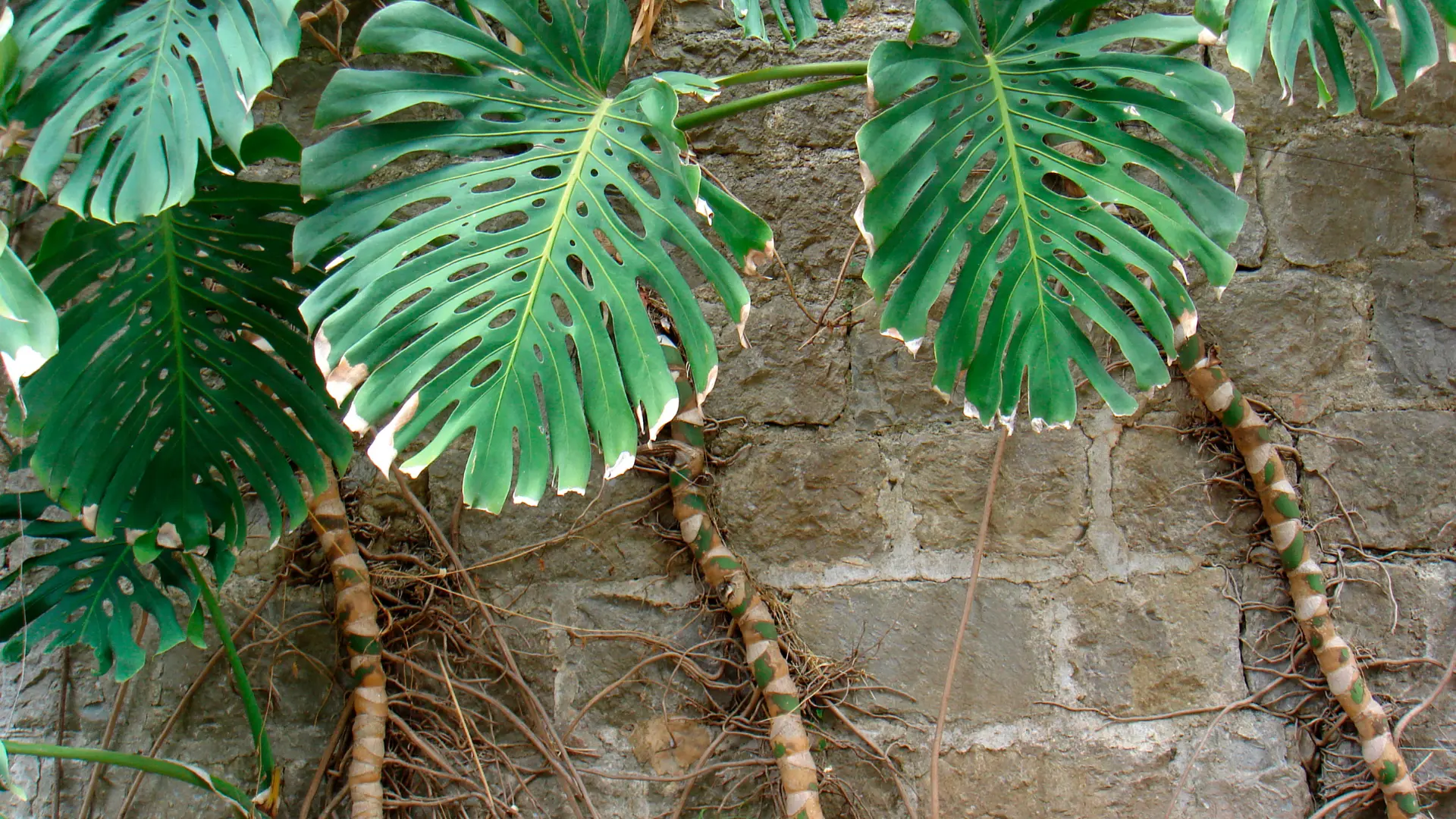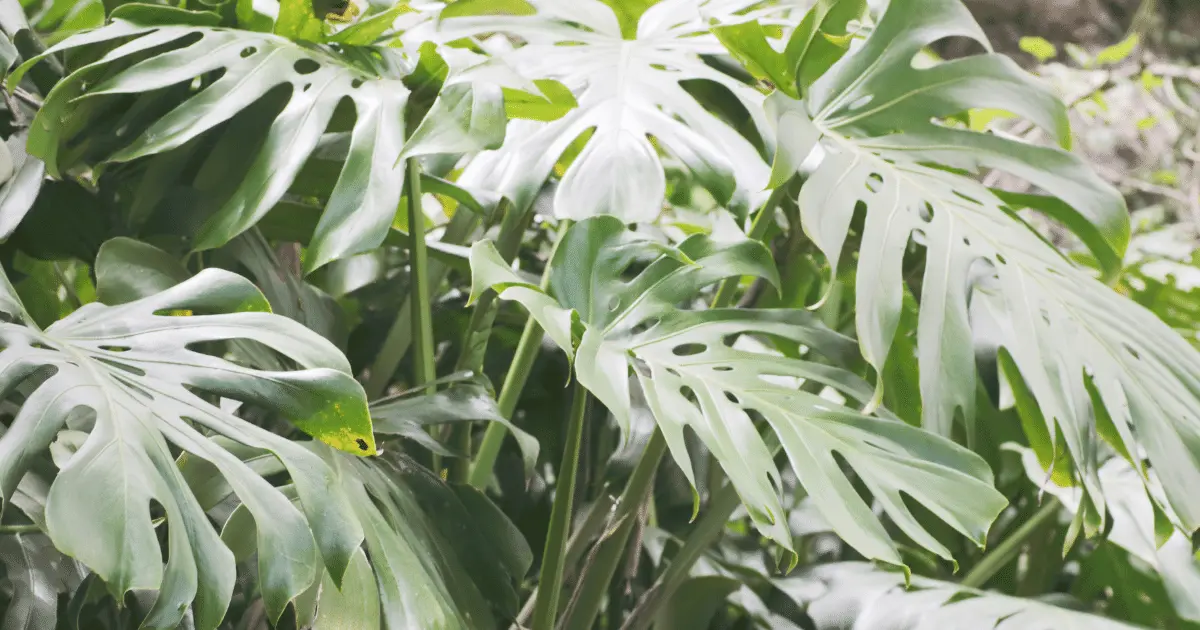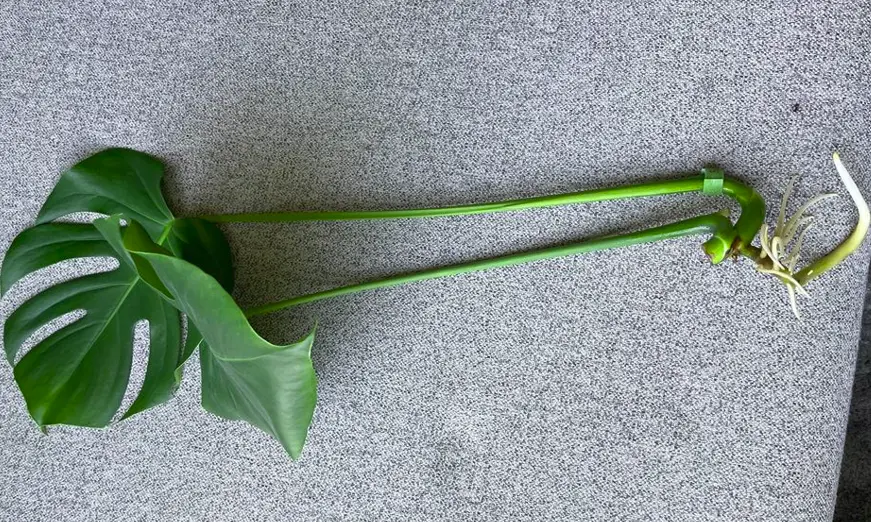Monstera deliciosa is a well-known tropical garden plant, easily recognizable for its distinct leaf patterns and slender stems. It’s effortless to propagate because of its protruding leaf nodes and identifiable aerial roots and because it grows excellently well in indoor environments with low to average sunshine.
Before a friend gifted me with my first Swiss Cheese Plant (a popular name for the Monstera Plant), I already had a garden full of Jade, Snake, and Pothos Plants, so my first experience propagating it went pretty well.
I was later to find out that the Monstera Plant has several names it’s been called, depending on the region you are in, including Hurricane Plant and Mexican Breadfruit.

Not that you need to have prior experience to propagate it, as you’ll come to learn, even first-time propagators can grow a pot of the Swiss Cheese Plant successfully.
What are the standard methods of Propagating the Monstera deliciosa Plant?

Monstera deliciosa is commonly propagated by planting the rooted stem cuttings or by division of a parent plant. You could also propagate it from rhizomes growing in the roots. I’ll explain how that works shortly.
First, let’s discuss propagating Monstera by division.
Propagating Monstera deliciosa by Division
Propagating Monstera plants by division is helpful in many ways. For example, because of their ability to spread across vast spaces, a fully grown Monstera plant with its long slender stem and broad perforated leaves might appear all over the place.
Dividing a single plant helps to manage the available spaces for other garden plants. You also get younger and fresh-looking deliciosas ready to be shared with someone or placed at a different location.
Dividing a Monstera plant is relatively straightforward and requires no special gardening tools. Coincidentally, the best time to divide a Monstera plant is late winter or early spring. So now’s a great time to get your hands dirty in the Soil.
The first step is to carefully pull the whole plant out of its pot or container, careful not to damage any roots or rhizomes.
You can water the plant potting to loosen the SoilSoil and make it easier. It’s advisable to start watering the plant days before D-Day.
A simple trick is to bend the pot sideways and gently rock it forth and backward until the whole plant slides out.
If the Monstera won’t still come out, then a hand trowel might help to tuck it out from the sides of the pot.
Now with the Monstera safely removed from its pot, scan through the roots for naturally occurring sections to divide the plant.
Ensure each division has averagely equal roots, stems, and leaves, with the leaf node intact.
The new plant divisions can be planted immediately in new gardening pots, ensuring that each bank has good drainage and is bigger than the new Monstera plant.
It takes about a month for the divided Monstera plant to develop new roots. You should ensure it is kept where there’s adequate indirect sunlight to have bright shiny leaves growing on it.
Propagating Monstera deliciosa by Cuttings
Propagating Monstera deliciosa by Cuttings

Inarguably the most standard and chosen method of propagation among gardeners, The Swiss Cheese plant can be propagated by Cuttings in water or directly in a soil mix potting.
Unlike the Pothos plant leaves, Monstera plant leaves cannot be propagated into a new plant, and that’s because only sections of the plant with growing nodes or budding growths can be reproduced into a new plant.
Is it preferable to Propagate the Swiss Cheese Plant in water or directly in Soil?
The choice is up to you. If you’d like to keep a close eye on the Monstera plant as it undergoes the rooting and planting stages, then propagating in a water glass container is necessary. However, you’ll need to transplant the rooted cuttings once they’re ready to be planted in a soil mix potting.
If you’re not particularly interested in the tiny details of Propagating your Monstera plants, then rooting them directly in the Soil will save you the time to pursue other interests.
Where do I cut Monstera Plant for Propagation?
The Cuttings should be made at the nodes. Without a node or axillary bud, the cutting will only rot and die instead of developing roots for new plants.
I prefer each cutting to have no more than two leaves on them; it is essential that each cutting is propagated bearing its leaves.
If you’re rooting your cuttings in water, get a glass jar or container and fill 2/3 of it with water.
Next, place each cutting in its container and position them under indirect sunlight. You’ll need to change the water every week until you observe the roots developing on the cuttings.
If you’re rooting your cuttings in Soil potting, ensure the pot has enough holes for proper aeration.
The cuttings should be inserted 2-3 inches into the Soil. Do not water the Potting for the first few days to allow the cuttings to adjust to their new home.
I only began to spray adequate amounts of water on my Monstera plants when I noticed that the soil surface was getting dry and crispy.
Some experts suggest soaking your cuttings in rooting hormones such as perlite or natural honey to speed up their rooting process.
How long does Monstera Plant take to Root?
Rooting your Monstera cuttings in a water medium is faster than in a soil pot.
However, the consensus agreement among propagators suggests that it should take between 3-5 weeks in both water and soil media.
Can I still Propagate the Swiss Cheese Plant without a leaf node?
The answer to that is an awful no! Monstera plants can only be propagated from axillary root growths or stem nodes, and I had to learn this after waiting in vain for almost six weeks.
What happens to the plant if I leave the Aerial roots in water for some days?
The unfortunate outcome is a rotting of the aerial roots. The roots undoubtedly have only one job: absorbing moisture and nutrients for the plant. However, they’re not meant to be left in water perpetually.
What are the Water requirements of Monstera deliciosa?
The Monstera plant is one of the most fantastic thriving garden plants of tropical origin. Its moisture needs are minimal. Water should be sprayed on a growing pot once every 1-3 weeks, depending on the humidity and temperature.
The Monstera deliciosa Plant thrives very well in outdoor environments. Because it is an efficient climber, it can grow on trees and other shoots to heights above 10 feet indoors and 50 feet in open environments.
Its beautiful love-shaped perforated leaf structure gives it its unique appeal wherever it is grown. A young Monstera Plant can be propagated within three months from cutting to soil planting, and you’re guaranteed to waste no time with this Swiss Cheese Plant.
